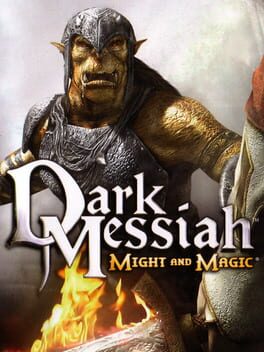The Might and Magic fantasy universe is a well-established series dating back to 1986. We've all seen many of their games on different platforms, even if we haven't all played them, but most of them have been straightforward turn-based strategy or role-playing games. However, Ubisoft and Arkane Studios' 2006 Dark Messiah of Might and Magic does not fall into any of these categories.
Like Arkane Studios' previous game from that year, Arx Fatalis, it is a first-person game. However, Dark Messiah of Might and Magic turned out to be very linear in terms of role-playing, and is instead an action-based game that focuses more on sword swinging and magic fireball throwing.
The main character is Sareth, a young half-demon raised by Phenrig, a stern mentor and devoted to his teachings. Our protagonist knows very little about his past, yet he has absorbed the lessons of martial arts mastery and has become proficient in both weapons and magic.
About 40 different weapons can be found in the game and you can learn several dozen different combat spells. This diversity allows you to destroy enemies as you please, whether in melee with a sword or dagger, or at range with a bow or spell. The game world consists of 12 large maps.
In Ashan, the forces of evil are stronger than anywhere else in the realm, and evil is rampant in the land, surrounded by fearless orcs, cruel goblins, treacherous trolls, undead, gigantic dragon-like beasts and many other monsters of great malice. Often, the only way to survive is to hide in the shadows and sneak past enemies.
In Dark Messiah of Might & Magic, by gaining experience, the player can unlock new items, specializations and abilities that can then be used effectively in battle. These are combos, spells or different deadly critical hits. The multiplayer part allows you to play together with up to 32 people.
The online part of the game has a variety of game modes, starting with simple deathmatches and allowing you to develop your character during extensive scenarios. The graphics are created by an improved version of the Source Engine, previously used by Valve Studios in Half-Life 2. Additional improvements to the engine include character control, environmental physics and character models. The game's storyline, including side content, is approximately 10-13 hours long.
Like Arkane Studios' previous game from that year, Arx Fatalis, it is a first-person game. However, Dark Messiah of Might and Magic turned out to be very linear in terms of role-playing, and is instead an action-based game that focuses more on sword swinging and magic fireball throwing.
The main character is Sareth, a young half-demon raised by Phenrig, a stern mentor and devoted to his teachings. Our protagonist knows very little about his past, yet he has absorbed the lessons of martial arts mastery and has become proficient in both weapons and magic.
About 40 different weapons can be found in the game and you can learn several dozen different combat spells. This diversity allows you to destroy enemies as you please, whether in melee with a sword or dagger, or at range with a bow or spell. The game world consists of 12 large maps.
In Ashan, the forces of evil are stronger than anywhere else in the realm, and evil is rampant in the land, surrounded by fearless orcs, cruel goblins, treacherous trolls, undead, gigantic dragon-like beasts and many other monsters of great malice. Often, the only way to survive is to hide in the shadows and sneak past enemies.
In Dark Messiah of Might & Magic, by gaining experience, the player can unlock new items, specializations and abilities that can then be used effectively in battle. These are combos, spells or different deadly critical hits. The multiplayer part allows you to play together with up to 32 people.
The online part of the game has a variety of game modes, starting with simple deathmatches and allowing you to develop your character during extensive scenarios. The graphics are created by an improved version of the Source Engine, previously used by Valve Studios in Half-Life 2. Additional improvements to the engine include character control, environmental physics and character models. The game's storyline, including side content, is approximately 10-13 hours long.
